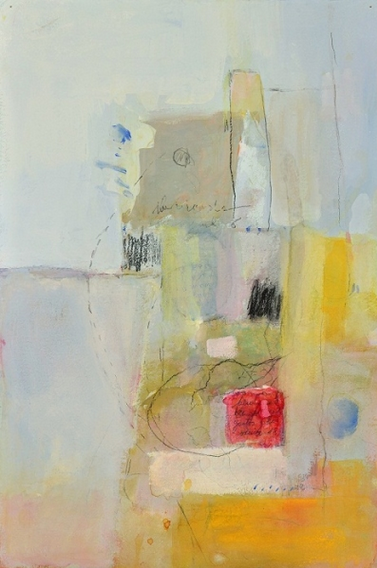| During this assignment, the Art 1 students will be taught about various printmaking techniques, and will be guided through a lesson that challenges them to create non-objective monotypes. Let’s face it, non-objective art is very misunderstood by the masses. I wish I had a nickel for every time I've been in a museum or gallery and heard the phrase "my five year old could do that!". The aim of this unit is to help our Art 1 students understand the value of non-objective abstraction by creating a series of monotypes that borrow elements from several artists who work non-objectively. Below is a list of artist whose work will be discussed in this unit. Peri Schwartz Cindy Neuschwander Deborah Zlotsky Tanja Softic Heidi Trepanier Mary Scurlock Sally Bowring Rob Szot We will begin this unit by discussing a variety of printmaking techniques and terms. We will then have a demonstration about one of the many monotype techniques before students are given the freedom to design their own non-objective abstract images on their plexiglass plate. Each student will be required to create three different non-objective monotypes. Each of the three prints must demonstrate a heavy stylistic influence from the artists whose work is discussed in this unit. Each print must be labeled on the back with the list of artists whose work influenced that print. Process for design inspiration: Students are required to create a digital folder for each of the artists we discussed in class (8 total artists). Then, the students take class time to thoroughly investigate the work of these artists, and collect a minimum of 5 images they enjoy most from each artist. Then, they are to create a Google Document that contains their favorite image from each artist. The images on that document should be resized so they all fit on one page of the document. These 8 images from that will be printed, cut out, pasted into their sketchbooks, annotated, and used as the inspiration for their three monotypes. Here is an example of how the students will annotate the images once they've been pasted into the sketchbook. This lesson was inspired by the book "Steal Like an Artist" by Austin Kleon. The reasoning behind inventing this assignment was to have the student explore non-objective abstraction with a little bit of guidance from artists whose work has been recognized by the art world. If we take the time to look at successful artwork, deconstruct it, reorganize it, and combine it, the results are more likely to be successful. Critique: The critique process will take place in small group presentations. As the students show their work, they are required to bring their sketchbooks that show the 8 works of art that inspired their series of monotypes. As they present and are critiqued, the students are required to articulate what elements they borrowed from each of the seven images as they worked. This discussion will push the dialogue about what makes a non-objective image successful and interesting. Students will be graded on having completed 3 prints that are properly signed with clean and even borders. They are also graded on how well they articulate the specific inspiration for their work, and how familiar they are with the eight artists we studied during this assignment. Students must create 3 prints that somehow address the stylistic qualities of all 8 works of art that were chosen as the project's inspiration. Self Evaluation Grading Breakdown Matting Once the students have been critiqued and have documented their work on their websites, they will choose their best print to mat. A demonstration will take place, and all students will be responsible for learning to mat their own work. Mixed Media Follow Up The follow up to this assignment is to take those prints that didn't come out as well as the students had liked, and re-work them with mixed media to bring them to life. There are no limits to what can be done in this stage of the process, and experimentation is highly encouraged. |
|
5 Comments
|
ART 2
|




 RSS Feed
RSS Feed
